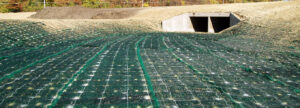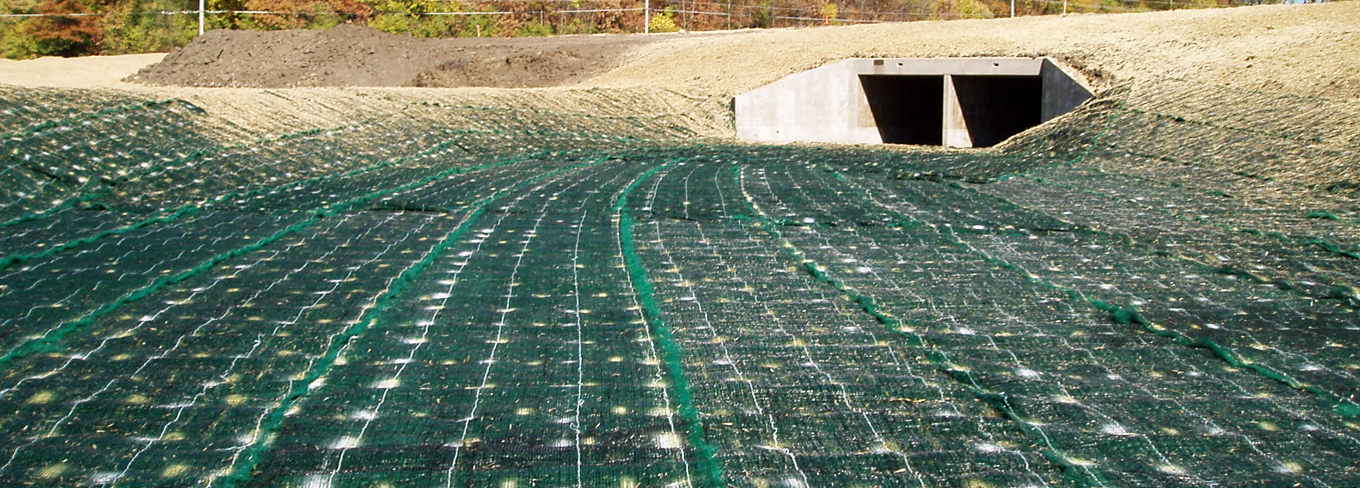Soil erosion is a major concern for construction companies. In fact, erosion control is required by federal and local regulations for many projects.
Sediment clogging rivers and bodies of water causes floods, which can be deadly for wildlife and humans. Erosion Control Charleston SC measures preserve nutrient-rich topsoil and prevent the spread of pollutants.
Erosion is a natural process that can be caused by wind, water, or gravity and occurs when soil particles are dislodged and moved by mass movement. Construction activities can accelerate erosion by removing topsoil and polluting surrounding bodies of water. Erosion control is a vital aspect of any construction project to prevent erosion and protect nearby bodies of water from pollution.
Erosion control is the application of best management practices (BMPs) during land-disturbing construction and other land-disturbing activities to limit sediment transport, stabilize disturbed areas, and encourage the growth of vegetation. A variety of erosion control methods are used during construction, including silt fencing installation, material berming, stray wattles, and inlet protection. Erosion control can also be accomplished through the use of wood fiber mulches, straw mulching, and hydroseeding.
The primary goal of erosion control is to minimize the amount of exposed soil during the course of construction by protecting it from the weather and other processes until it is able to be covered by vegetation or a temporary sediment control blanket. This will help keep pollutants out of the stormwater system and natural bodies of water.
It is critical to have an approved erosion sediment pollution control plan in place and to implement the appropriate BMPs to meet local, state, and federal requirements. Contractors must be prepared to discuss the plan with their CESCL inspector and make changes when required by the jurisdiction.
The plan must be treated as a living document and should be updated frequently onsite. Often times, contractors will have in-house CESCL experts perform this task. If not, a third-party company should be enlisted to complete the plan based on the individual construction site.
In addition to having an approved erosion and sediment control plan, it is important to have all construction activities monitored, tested, and documented. The onsite CESCL inspector will ensure that the correct BMPs are being used and that visible and measurable sediment and pollutants are not leaving the site, entering adjacent properties, or storm sewer and drainage systems before construction is finished.
What are the common causes of erosion?
Erosion happens naturally in nature, but construction sites and other human activities speed up the process. Building roads and rails, tearing down river banks, or adding fill to land makes the soil more vulnerable to erosion. Erosion can also harm people and built structures, resulting in bridges collapsing or homes being destroyed by landslides.
Running water is the leading cause of erosion because it has a lot of power and can carry away soil particles. The eroded sediment then moves downstream, disrupting natural ecosystems and damaging buildings and roads. Other common causes of erosion include wind and gravity, both of which can cause the movement of soil particles.
Land with little or no vegetation—including farm fields that are left bare after harvesting crops—is particularly prone to erosion from water. Vegetation helps to hold the dirt in place, absorbs rainwater, and breaks up the energy of falling raindrops. This slows down runoff, which reduces the force of the sediment it carries and allows water to infiltrate the soil.
Soil with a loamy texture, which is made up of fine sand and silt particles, is particularly susceptible to erosion from water. Because these particles do not stick together well, they are easily separated from the rest of the soil. As a result, water can wash or sweep these particles away, eventually eroding the entire soil layer.
The steepness and length of a hill or slope are other factors that affect the likelihood of erosion. The more steep and long the site is, the more likely it is to experience erosion because inclined surfaces do not absorb water as well as flat ones. Erosion can occur on both straight and curved slopes, but it is more severe on sloping terrain because the erosion takes place over a greater distance.
The most harmful effect of erosion is when sediment and pollutants are carried downstream. Erosion can deposit soil and toxins into waterways, damaging the environment and contaminating drinking water supplies. The contaminated sediments can also block rivers and dams, causing floods and reducing the lifespan of water reservoirs.
What are the most effective erosion control methods?
Soil erosion is a natural process, but the problem has accelerated over time due to our activities altering natural dynamics and removing vegetation cover. There are many erosion control methods that have been proven to work to reduce the effects of erosion.
Permanent vegetation cover is extremely effective at preventing soil erosion. Plant roots hold the soil together, and their leaves slow down the impact of raindrops on the ground, reducing erosive force. Vegetation also encourages water uptake by the soils, which helps reduce erosion and runoff.
Grass and shrubs are the most effective types of vegetation for preventing erosion. They have long, branched root systems that hold the soil tightly in place and are able to grow quickly to fill in gaps and holes in the soil. They also have a good capacity to grow through rocks and other debris that may be present in the soil.
For steep slopes, other forms of temporary vegetation can be used to help prevent erosion until the roots can take hold. Fiber rolls (made of straw, rice wattle, or coconut fibers), hay bales, logs, and silt fences can be used to help trap sediment and slow down water moving downhill. This allows the soil to be stabilized and creates conditions that are more conducive to emerging vegetation. These are great for construction sites and other areas that will be exposed to erosion until they are able to be covered with permanent vegetation.
Sediment ponds are another highly effective sediment control method. This is because they allow the sediment to fall to the bottom of the pond instead of being carried downstream and polluting the environment. This is an important way to reduce the pollution caused by construction site runoff and other sources of sediment in the environment.
Erosion can be a huge problem for farmers and other people who need to use land for agricultural or commercial purposes. It can destroy crops and cost farmers millions of dollars each year. However, there are a number of erosion control methods that can help prevent and stop erosion in the first place, saving farmers from these devastating problems.
How can I prevent erosion?
Erosion is a natural process, but when it’s out of control, it can damage both private and public property as well as wildlife. It also impacts water quality, as chemicals, construction materials, and sediment are carried downstream and end up in our waters. In addition, erosion can displace vital topsoil that contains valuable microorganisms, nutrients, and organic matter, which are washed away with the eroded sediment.
Whether you’re concerned about soil erosion in your own yard or on an acre of land used for farming, there are several methods that have been proven to dramatically reduce and prevent erosion.
Protecting bare soil with vegetation is one of the most effective ways to prevent erosion. Planting deep-rooted native plants like grass, wildflowers, and woody perennials that grow fast and have large roots helps keep the soil covered while also adding beauty to your landscape. Alternatively, you can use permanent vegetative barriers that are essentially woven fences made of vegetation or a combination of grass, shrubs, and trees.
Other measures that are used to prevent erosion include diverting excess water flowing over unprotected soil, reducing slope gradients where possible, and increasing surface roughness, which decreases the water’s velocity and erosive power. Using erosion control products and practices is often required by law for construction projects, and using the right materials and methods can help you minimize erosion and stay compliant with the rules.
For severe erosion on steep slopes and embankments, the most effective protection is constructing terraces that slow the movement of runoff and allow for the growth of vegetation. The use of erosion control blankets, which are mats of organic or inorganic material held together by either synthetic or biodegradable netting, is another method of protecting bare soil from erosion. Erosion control blankets are a great option for construction sites, as they can be laid and removed without disturbing the soil beneath.
If you’re concerned about erosion, it’s important to act quickly. Erosion can be a serious problem and can cause major damage if it’s allowed to get out of hand, and fixing severely eroded land can cost significant amounts of money. It can also harm your crop yields, and pollution from eroded sediment can hurt water bodies and destroy ecosystems.
